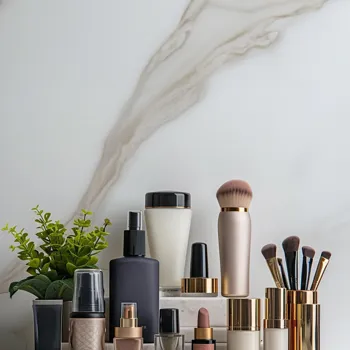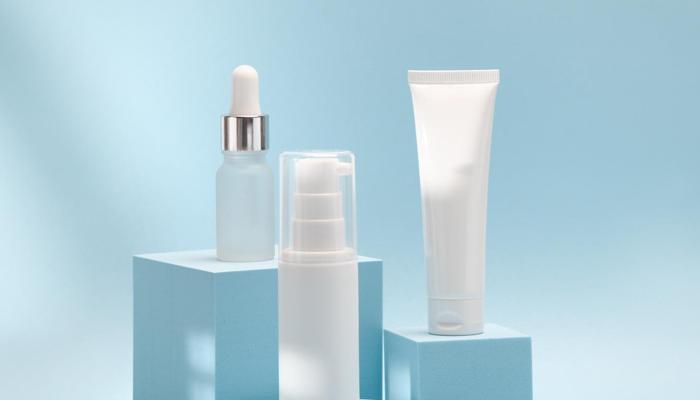Unveiling the Power of Retinol for Glowing Skin - Dive into the Desi Guide! The key to youthful skin awaits!
Retinol. The word is buzzing everywhere, from your Instagram feed to the beauty counters at your favourite
stores. It’s touted as a miracle ingredient for smoother, younger-looking skin. But what exactly is retinol, and how do you use it without turning your face into a flaky, irritated mess?
Don't worry, we've got you covered! Think of this as your friendly neighbourhood guide to understanding retinol, tailored for Indian skin and climates.
We'll break down the science, share the best practices, and dispel some common myths, so you can incorporate this powerful ingredient into your skincare routine safely and effectively. Get ready to unlock your best skin yet!
What is Retinol, Actually?
The Science Behind the Hype
At its core, retinol is a type of retinoid derived from Vitamin A. Retinoids are a group of chemicals that are all related to Vitamin A. Now, Vitamin A is an important element for our body's everyday processes that relate to keeping our skin healthy.
Think of retinol as a super-charged helper for your skin cells. It speeds up cell turnover. Basically, it encourages your skin to shed old, dull cells faster and replace them with fresh, new ones.
This process helps to lighten hyperpigmentation (those pesky dark spots), fades fine lines and wrinkles, and can even help clear up acne. In addition to all of this, your body also produces collagen, which keeps your skin nice and plump.
But wait, it gets even better.
Retinol also boosts collagen production. Collagen is like the scaffolding that keeps your skin firm and elastic. As we age, our collagen production naturally declines, leading to wrinkles and sagging. So, by revving up collagen, retinol helps to keep your skin looking youthful and resilient.
It also works by exfoliating your skin, getting rid of dead cells that make your skin look dull. This can also improve the texture of your skin, making it feel smoother and softer.
Now, it is important to remember that retinol is a potent ingredient, so it’s something you should always use carefully, to avoid irritation or damage to the skin. This is important, as using it too vigorously can cause undesired effect.
There are different types of retinoids available, some stronger than others. Retinoic acid is the strongest, and you need a prescription from a dermatologist to get it. Retinol is a milder form that's available over-the-counter in serums, creams, and lotions.
There are also retinol esters like retinyl palmitate, which are even gentler but also less potent. The key difference between all retinoids is the amount of steps in which the skin is required to convert them into retinoic acid.
Retinoic acid, once used, binds with retinoid receptors that work to influence cell turnover and collagen stimulation. The use of retinol provides a slow and steady conversion, which usually causes less harsh side effects.
The Benefits of Retinol: More Than Just Anti-Aging
While anti-aging is the most well-known benefit of retinol, its powers extend far beyond just smoothing wrinkles. Here's a rundown of what retinol can do for your skin:
Reduces Fine Lines and Wrinkles: By stimulating collagen production and speeding up cell turnover, retinol helps to plump up the skin and diminish the appearance of fine lines and wrinkles.
Fades Hyperpigmentation: Retinol can significantly lighten dark spots, sun spots, and acne scars by promoting the shedding of pigmented skin cells.
Treats Acne: Retinol helps to unclog pores and prevent breakouts by reducing the stickiness of skin cells which leads to keeping pores clear from dirt and debris. It also has anti-inflammatory properties that can soothe irritated, acne-prone skin.
Improves Skin Texture: With regular use, retinol can make your skin feel smoother, softer, and more refined by exfoliating dead skin cells and evening out skin tone.
Boosts Radiance: By promoting cell turnover, retinol reveals fresh, new skin cells, giving your complexion a healthy, youthful glow.
How to Introduce Retinol into Your Skincare Routine: A Step-by-Step Guide
Ready to incorporate retinol into your routine? Here's how to do it the right way:
Start Low and Slow: This is crucial, especially if you have sensitive skin. Begin with a low concentration retinol product (0.01% to 0.03%) and use it only once or twice a week.
Apply at Night: Retinol is sensitive to sunlight, so it's best to apply it in the evening after cleansing your face.
Use a Pea-Sized Amount: A little goes a long way! Gently apply a pea-sized amount to your entire face, avoiding the delicate eye area.

Follow with Moisturizer: Retinol can be drying, so it's important to hydrate your skin. After applying retinol, wait a few minutes and then apply a rich, hydrating moisturizer.
Gradually Increase Frequency: As your skin gets used to retinol, you can gradually increase the frequency of use.
Aim for every other night, and eventually, every night if your skin can tolerate it. Always have backups for moisturizing and to give your face a break, if the skin needs it.
Always Use Sunscreen: This is non-negotiable!
Retinol makes your skin more sensitive to the sun, so it's essential to apply a broad-spectrum sunscreen with an SPF of 30 or higher every morning, even on cloudy days. And reapply throughout the day, if possible.
Common Retinol Mistakes to Avoid: Don't Let These Happen to You!
Using Too Much Too Soon: This is the most common mistake. Jumping in with a high concentration retinol or using it too frequently can lead to irritation, redness, and excessive peeling.
Ignoring Sunscreen: As mentioned before, sunscreen is crucial when using retinol.
Skipping sunscreen can lead to sunburn, hyperpigmentation, and premature aging.
Combining with Other Actives: Be careful when using retinol with other strong actives like AHAs (glycolic acid, lactic acid), BHAs (salicylic acid), and Vitamin C.
Combining these ingredients can increase the risk of irritation. It's usually best to alternate them on different nights or use them at different times of the day.
Applying to Damp Skin: Applying retinol to damp skin can increase its penetration and potentially lead to irritation.
Always make sure your skin is completely dry before applying retinol.
Expecting Overnight Results: Retinol takes time to work. Don't expect to see a dramatic difference in your skin overnight. You'll typically start to see results after a few weeks of consistent use.
Retinol and Indian Skin: What You Need to Know
Indian skin is known for its high melanin content, which makes it more prone to hyperpigmentation. Retinol can be incredibly effective for addressing hyperpigmentation in Indian skin, but it's important to proceed with caution.
Start with a low concentration retinol and gradually increase the frequency of use. Pay close attention to your skin and adjust your routine as needed. It's also important to choose a retinol product that's formulated for sensitive skin.
Look for products that contain soothing ingredients like ceramides, hyaluronic acid, and niacinamide to help minimize irritation.
Finding the Right Retinol Product: Navigating the Market
With so many Retinol products available on the market, it can be important to find the right product for your skin. Consider your skin type, skin sensitivity, and whether or not you have used retinol before.
Serums are a very popular way to get the retinol. If you never used retinol before, it might be better to start with a cream before moving onto a serum.
Retinol can provide great improvement to your skin, as long as you use it in the right way.










